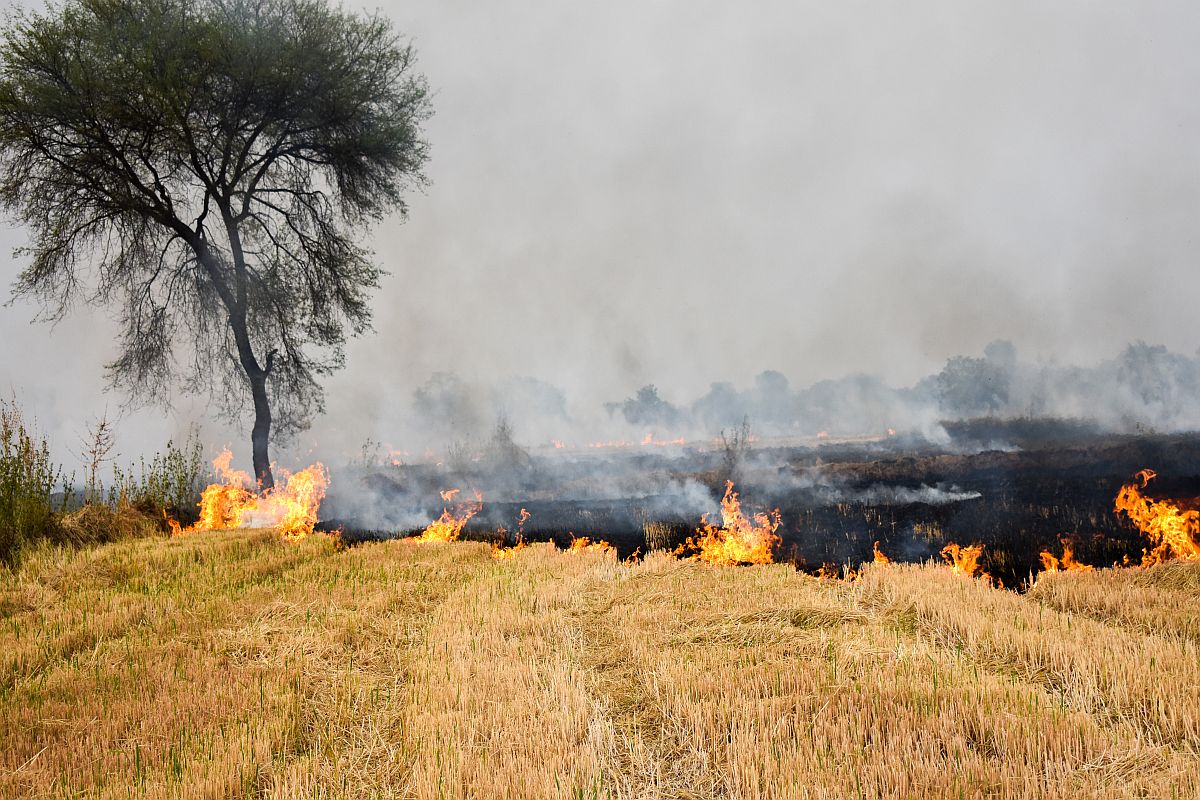Punjab Health Secy gets notice on Moosewala’s father’s harassment claim
The government has questioned why the matter was not brought to the attention of the Chief Minister or the Health Minister before an investigation.
Each year at this time, newspapers are filled with reports and a sense of alarm from the public. With this, the demand for urgent solutions gathers momentum, once again – yet every year the problem remains unresolved.

Stubble burning (Representational image: iStock)
On 15 September there were no cases of crop stubble burning. Just six days later, forty-two cases were recorded. Crop stubble burning has also started in Haryana. Each year at this time, newspapers are filled with reports and a sense of alarm from the public. With this, the demand for urgent solutions gathers momentum, once again – yet every year the problem remains unresolved.
Just last week, the Environment Pollution (Prevention and Control) Authority (EPCA), mandated by the Supreme Court, asked the Punjab and Haryana governments to take urgent measures to reduce crop stubble burning. A plea has also been filed in the Delhi High Court asking the Punjab and Haryana governments to take immediate measures to curb stubble burning, as the resultant pollution will further endanger the health of people who are already suffering greatly from the Covid pandemic.
The corona virus leaves patients with a reduced lung capacity, making a rise in pollution from stubble burning a matter of serious concern for the already vulnerable populations of Punjab, Haryana and the NCR region. The increased pollution levels not only contribute to high concentrations of lung-damaging particulate matter, but also lead to an increase in toxic pollutants such as carbon monoxide, methane and carcinogenic hydrocarbons.
Advertisement
The National Green Tribunal and Supreme Court have both stepped in to prohibit crop stubble burning, stating that the practice violates the right to a pollution-free environment under Article 21 of the Constitution. In 2015, the NGT also ordered that farmers who engage in burning crop stubble must pay environmental compensation. Nonetheless, crop stubble burning continues unabated.
The subsidies and incentives provided by the Government have not brought about a shift towards alternative uses of crop stubble. The subsidies being offered do not adequately cover the additional costs for fuel and electricity that have to be borne by farmers, as well as the cost of additional machinery. These schemes evidence a disconnect from the socio-economic realities of farmers’ lives. The issue of financial strain is particularly pertinent in the current Covid scenario. India is struggling with the economic costs of the lockdown. People have had to make lifestyle changes to reduce the spread of this highly contagious disease. In view of this, the action plan submitted by the Punjab and Haryana Governments to the Supreme Court-mandated EPCA, proposes the setting up of an increased number of custom-hiring centres (CHCs) to enable farmers to ‘purchase’ farm equipment on a rental basis. This will not be enough, as hiring the machines also needs to be made more affordable for farmers.
To put in place effective solutions, crop stubble burning needs to be dealt with through comprehensive, community-driven policies that address the root of the problem, as stubble burning is a symptom of a much larger issue – that of unsustainable agricultural practices. Diversification from wheat and rice is imperative and needs to be better supported and incentivised. Moreover, the impacts of the Covid19 pandemic necessitate that food security be built upon reforms that lead to greater ecological resilience, while also increasing the efficiency of India’s agri-marketing and public distribution system.
Solutions premised upon community participation and making crop residue management profitable for farmers are the need of the hour. For instance, Chhattisgarh has used a participative model through the promotion of gauthans, land held in common by each village where unused crop stubble is collected by farmers for conversion to organic fertiliser. The state bears the cost of transportation of the crop stubble from the farms to the nearest gauthan. This has also become a source of livelihood for rural youth who are engaged in converting the crop residue into organic fertiliser. Similarly, fifty villages in Western Uttar Pradesh started a project of sustainable use of crop stubble by making it into manure. Another group of farmers in Haryana has gone back to traditional methods of manual harvesting and have made this remunerative by selling the stubble to other farmers as fodder.
In Kirangatevalu village in Karnataka, electrification of the village has been achieved through a power plant that uses agricultural waste from sugarcane, as well as coconut fronds. Agricultural waste is sold by the villagers to the plant and they get access to electricity. A supply chain has been put in place to procure agricultural waste throughout the year from villages within a radius of 10 kms. It is reported that 48 villages inhabited by 120,000 people have been able to gain access to electricity through this project. The cooperative model is another viable model, already implemented in the dairy industry.
There is a need to move forward and find solutions that take into account the financial exigencies faced by farmers. These should be comprehensive and participative, responding to the needs of farmers and aiding them to make a shift towards sustainable agricultural practices. The writers are, respectively, Assistant Professor of Environmental Law, and a fifth-year law student of the O P Jindal Global University.
Advertisement